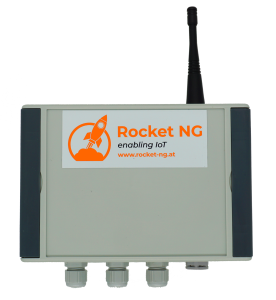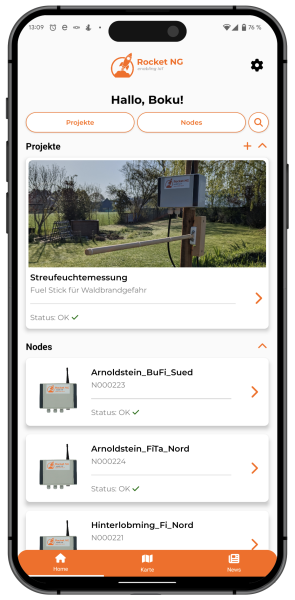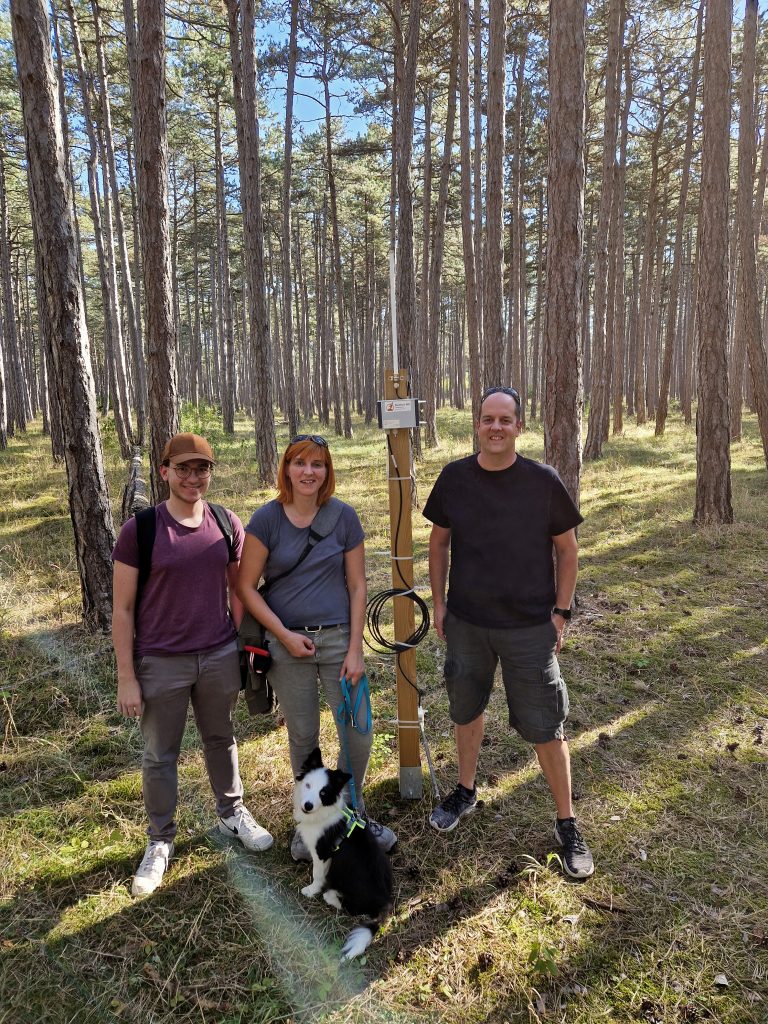IoT solution for measuring the risk of forest fires:
Our extensive IoT solution portfolio already ranges from the monitoring of infrastructure such as bridges, retaining walls, and railway sleepers to the monitoring of drinking water supply systems and glacier melt to our latest solution, forest fire monitoring. We are therefore particularly pleased that we have been nominated for the futurezone Award in the Internet of Things category with our IoT solution for measuring the risk of forest fires.

The centrepiece is the node developed by Rocket NG, which represents the interface between bits&bytes and the physical world. The node is self-sufficient with a service life of up to 15 years, ideally suited for use in harsh conditions, and easy to install. Almost all sensors available on the market can be connected to the Node and enable almost infinite application possibilities. The transmission is wireless and is transparent “plug and play” for the user. The Rocket OS operating system is constantly being expanded and supports AI functions for professional measurement requirements.
We are particularly proud of the mobile app we developed ourselves, which will be released in November.
The app makes it even easier for our customers to plan, implement, and operate their IoT solutions. In addition to the clear view of measured values, dynamic analyses can be created intuitively directly in the app.
A particular highlight of the app is integrated project management (even for projects that are not yet IoT projects), with location data, notes, document storage, photo documentation and the option for customers to create their own tags – the ideal starting point for implementing an IoT solution.
We provide an API for integration into customer systems, and an intuitive web platform is available to customers for scientific evaluations and analyses.


Our forests are a habitat for animals and plants, provide clean air, contribute to climate protection, and protect against natural hazards. But our forests are endangered. Climate change is presenting our forests with new challenges, with longer periods of drought and heatwaves increasing the frequency of forest fires around the world. The human factor also plays a major role in causing forest fires.
The consequences of forest fires are fatal in all cases. In addition to the increasing risk of natural hazards such as landslides due to the loss of protective forests, forest fires also endanger lives and infrastructure.
Preventing forest fires must therefore be the goal of all of us. Assessing the risk of forest fires is of central importance for deriving preventive measures. Prof. Harald Vacik and Dr. Mortimer M. Müller from the Institute of Silviculture at BOKU Vienna have been working on estimating the risk of forest fires in Austria for more than ten years.
The decisive parameter as to whether a forest fire can occur is the moisture of the litter layer, i.e. the dead plant parts on the ground surface such as leaves, needles, branch residues, and the like.
There are various ways to determine the dryness of these materials. The most precise, but also the most time-consuming method is to collect, dry, and weigh the plant parts.
Together, Rocket NG and the Institute of Silviculture have developed and successfully implemented an IoT solution for the digital and self-sufficient real-time recording of litter moisture and the microclimate in forests. Fuel stick sensors were connected to the IoT node of Rocket NG. The node analyses the measurements from the fuel stick sensors and transfers them to the IoT platform in real-time together with the microclimate data. Thanks to its compact dimensions and long service life of up to 10 years, the IoT solution can be deployed quickly and easily, especially in forests, and thus make a significant contribution to improving the prediction of the risk of forest fires.

In addition to determining the current meteorological conditions in the forest, the BOKU team is using the data to improve forest fire prediction models. Further exciting projects with this IoT solution are planned for the future. For example, the digital measurement data could help with the selection of tree species to find the most suitable tree species today for the challenges of tomorrow.
Further information on forest fires:
Forest fire blog Austria: https://fireblog.boku.ac.at

